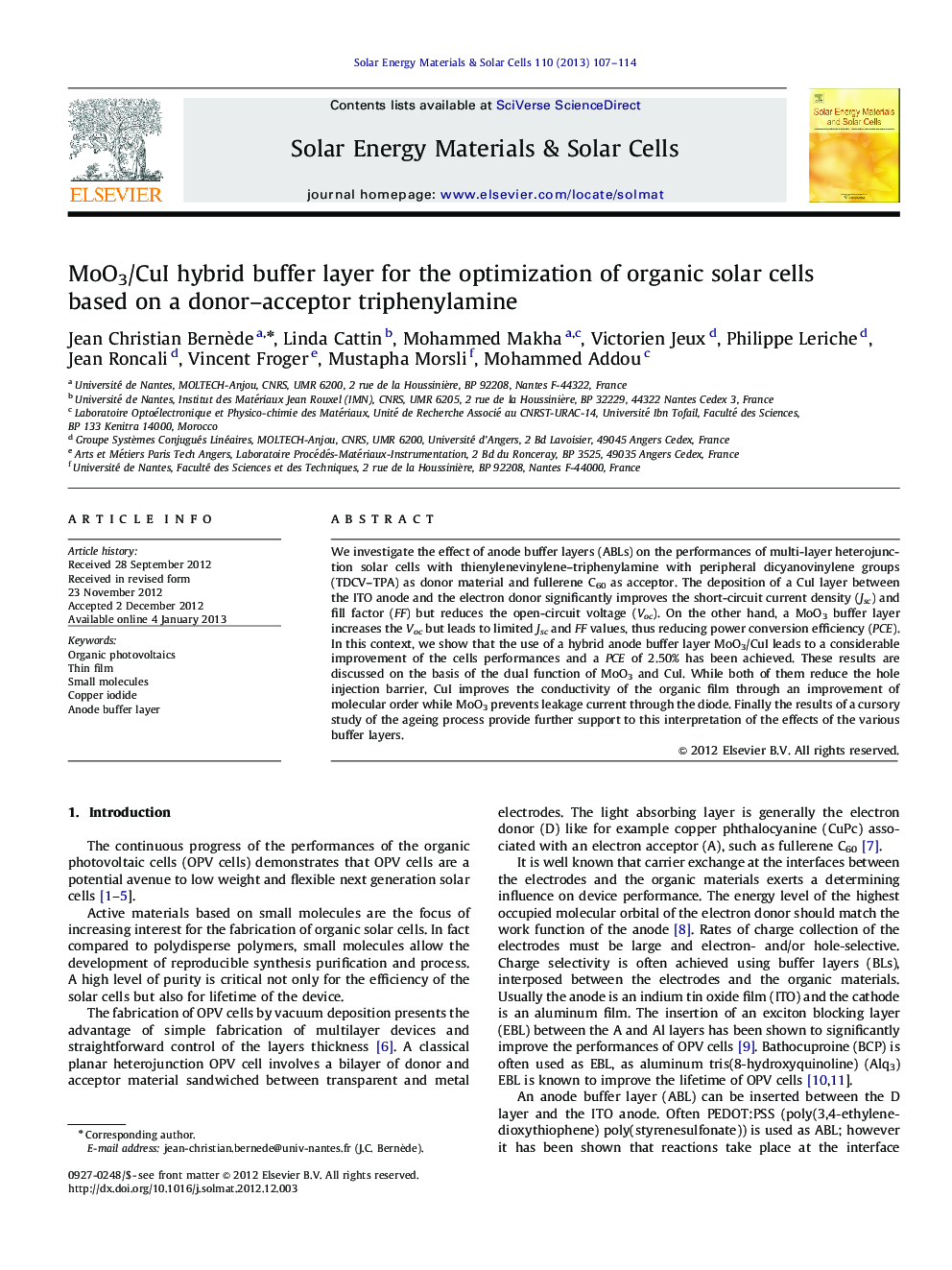| کد مقاله | کد نشریه | سال انتشار | مقاله انگلیسی | نسخه تمام متن |
|---|---|---|---|---|
| 78593 | 49337 | 2013 | 8 صفحه PDF | دانلود رایگان |

We investigate the effect of anode buffer layers (ABLs) on the performances of multi-layer heterojunction solar cells with thienylenevinylene–triphenylamine with peripheral dicyanovinylene groups (TDCV–TPA) as donor material and fullerene C60 as acceptor. The deposition of a CuI layer between the ITO anode and the electron donor significantly improves the short-circuit current density (Jsc) and fill factor (FF) but reduces the open-circuit voltage (Voc). On the other hand, a MoO3 buffer layer increases the Voc but leads to limited Jsc and FF values, thus reducing power conversion efficiency (PCE). In this context, we show that the use of a hybrid anode buffer layer MoO3/CuI leads to a considerable improvement of the cells performances and a PCE of 2.50% has been achieved. These results are discussed on the basis of the dual function of MoO3 and CuI. While both of them reduce the hole injection barrier, CuI improves the conductivity of the organic film through an improvement of molecular order while MoO3 prevents leakage current through the diode. Finally the results of a cursory study of the ageing process provide further support to this interpretation of the effects of the various buffer layers.
Figure optionsDownload as PowerPoint slideHighlights
► Thienylenevinylene–triphenylamine functionalized with dicyanovinylene groups as electron donor.
► CuI anode buffer layer modifies the morphology of the organic film.
► CuI improves the short circuit current and the fill factor of organic solar cells.
► MoO3 permits achieving high open circuit voltage.
► MoO3/CuI hybrid anode buffer layer allows achieving the highest efficiency of 2.5%.
Journal: Solar Energy Materials and Solar Cells - Volume 110, March 2013, Pages 107–114